8 start with V start with V

In 1939 there were ten million Jews in Europe. After Hitler there were four million. Today in 1996 there are under two million. On current projections the Jews will become virtually extinct as a significant element in European society over the course of the twenty-first century. Now, in the first comprehensive social and political history of the experience and fate of European Jews during the last fifty years, Bernard Wasserstein sheds light on the reasons for this dire demographic projection.
Drawing on a rich variety of sources, many hitherto unpublished, Wasserstein begins with the painful years of liberation after World War II when Jews tried to recover from the destruction of their people and communities, then traces the Jewish experience in Eastern and Western Europe in different national and ideological contexts. His important and original inquiry covers the impact on Jews of postwar reconstruction, Soviet occupation, the Cold War, and the collapse of communism. These, combined with the memory of Nazi genocide, the persistence of antisemitism, the development of Israel, and the Middle East conflicts, shaped the history of European Jewry in the second half of the twentieth century.
With exceptional eloquence and conviction, Vanishing Diaspora argues that survival for European Jews ultimately will depend on choices they themselves make to reverse trends. They have an alarmingly imbalanced death-to-birth ratio, and many have jettisoned religious observance in the spirit of a secular Europe, losing their cultural distinctiveness as well as their numbers. This often painful story of destruction, irreparable loss, and the shattering of ties thus serves as a wake-up call and a dramatic warning.
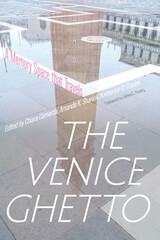
This interdisciplinary collection engages with questions about the history, conditions, and lived experience of the Venice Ghetto, including its legacy as a compulsory, segregated, and enclosed space. Contributors also consider the ghetto's influence on the figure of the Renaissance moneylender, the material culture of the ghetto archive, the urban form of North Africa's mellah and hara, and the ghetto's impact on the writings of Primo Levi and Marjorie Agosín.
In addition to the volume editors, The Venice Ghetto features a foreword from James E. Young and contributions from Shaul Bassi, Murray Baumgarten, Margaux Fitoussi, Dario Miccoli, Andrea Yaakov Lattes, Federica Ruspio, Michael Shapiro, Clive Sinclair, and Emanuela Trevisan Semi.
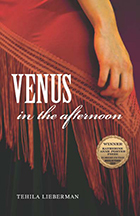
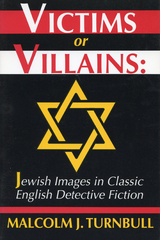
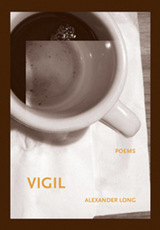
In Vigil, Shapiro chronicles with heart-wrenching lyricism the final four weeks of Beth's life in a hospice, attended by her parents, brothers, husband, daughter and friends. One by one, as loved ones arrive to visit Beth, Shapiro reveals fragments of their personal history, bringing to life a troubled and poignant past. A visit from their brother David triggers the memory of a searing betrayal—the parents disowned Beth after learning from David that she was secretly dating a black man; a visit from the parents recalls their bitter quarrels over Beth's radical politics; a visit from Beth's black husband brings the painful memory of their wedding and her parents' refusal to attend. These recollections and feelings that surface with each visit evoke the unresolved, deeply disturbing issues that kept the Shapiro family estranged for so long, making the reconciliation that Beth's death brings to her family all the more extraordinary.
Shapiro gives an unconventionally honest account of our responses—horror, relief, impatience, exhaustion, exhilaration, projection, fear, self-criticism, and a sense of fulfillment—in the presence of the dying. Concluding with a selection of moving poems, Shapiro affirms the astonishing link between creativity and healing, and provides a coda to the whole experience. The price of human connection may be great, but human connection, in the end, has the power to redeem even the most painful of human experiences.
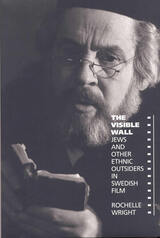
Rochelle Wright provides the first historical overview and analysis of the manner in which Jews and other ethnic outsiders have been depicted in Swedish film from 1930 to the present.
Focusing on films produced in Sweden for primarily Swedish audiences, Wright analyzes how the portrayal of the relatively small Jewish minority has evolved over the years. She compares the images of Jews in Swedish film with those of other ethnic subcultures: long-term resident communities such as tattare (‘travelers’, an indigenous pariah group often confused with gypsies), Finns, the Sami, and recent immigrant populations such as Greeks, Italians, Turks, and Yugoslavians.
Wright’s cross-disciplinary approach to interrelated issues of ethnicity and national identity enables her to take advantage of the methodologies of historians and sociologists as well as those of literary and film critics. She bases her study on a detailed analysis of the films, but, by way of comparison, she examines filmscripts and literary sources. She also consults contemporary reviews, interviews with actors and directors, and biographies and memoirs as well as critical discussion among film historians.
Wright confronts important—and exceedingly difficult—social questions. She deals head-on with xenophobia, anti-Semitism, immigration, assimilation, ethnicity, multiculturalism, and the national self-image of Swedes as reflected in their cinema. She also analyzes the manner in which Swedish film represents the persecution of Jews in Nazi-dominated Europe.
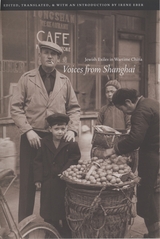
When Hitler came to power and the German army began to sweep through Europe, almost 20,000 Jewish refugees fled to Shanghai. A remarkable collection of the letters, diary entries, poems, and short stories composed by these refugees in the years after they landed in China, Voices from Shanghai fills a gap in our historical understanding of what happened to so many Jews who were forced to board the first ship bound for anywhere.
Once they arrived, the refugees learned to navigate the various languages, belief systems, and ethnic traditions they encountered in an already booming international city, and faced challenges within their own community based on disparities in socioeconomic status, levels of religious observance, urban or rural origin, and philosophical differences. Recovered from archives, private collections, and now-defunct newspapers, these fascinating accounts make their English-languge debut in this volume. A rich new take on Holocaust literature, Voices from Shanghai reveals how refugees attempted to pursue a life of creativity despite the hardships of exile.

A priceless collection of song texts in Yiddish and English, as well as a selection of tunes Rubin transcribed, this volume brings the Jews' ancient, itinerant culture alive through children's songs, dancing songs, and songs about love and courtship, poverty and work, crime and corruption, immigration, and the dream of a homeland. Rubin's notes and annotations weave each text into the larger story of the Jewish experience.
Noted scholar Mark Slobin provides a new foreword that includes a biographical sketch of Rubin and an assessment of her contributions over a lifetime of collecting, absorbing, and disseminating Yiddish folksong.
READERS
Browse our collection.
PUBLISHERS
See BiblioVault's publisher services.
STUDENT SERVICES
Files for college accessibility offices.
UChicago Accessibility Resources
home | accessibility | search | about | contact us
BiblioVault ® 2001 - 2024
The University of Chicago Press









